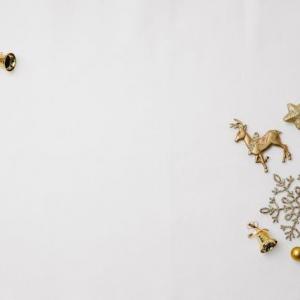
Introduction
Sports are as much about skill, strategy, and competition as they are about rituals, superstitions, and the enigmatic forces that seem to influence outcomes beyond human control. Throughout history, athletes, teams, and fans have attributed wins and losses to various curses and superstitions. These beliefs, often rooted in tradition and folklore, add a mysterious and entertaining dimension to the world of sports. This article delves into some of the most famous sports curses and superstitions, exploring their origins, impact, and the stories that continue to captivate sports enthusiasts worldwide.
The Curse of the Bambino
One of the most famous sports curses is the Curse of the Bambino, which haunted the Boston Red Sox for 86 years. The curse is said to have begun when the Red Sox sold Babe Ruth, also known as "The Bambino," to the New York Yankees in 1919. Before the sale, the Red Sox had won five World Series titles, but after Ruth's departure, the team experienced a long championship drought.
The Yankees, on the other hand, went on to become one of the most successful franchises in baseball history. The Red Sox's misfortunes included a series of near-misses and dramatic losses in the postseason, which fans and media attributed to the curse. The curse was finally broken in 2004 when the Red Sox won the World Series, sweeping the St. Louis Cardinals. The victory ended the so-called hex and brought jubilation to Boston fans, marking the end of a long-standing sports superstition.
The Curse of the Billy Goat
The Chicago Cubs were famously afflicted by the Curse of the Billy Goat, a superstition that allegedly began in 1945. According to legend, William "Billy Goat" Sianis, a tavern owner, brought his pet goat to Wrigley Field to watch the Cubs play in the World Series. However, the goat's odor prompted complaints from other fans, and both Sianis and his goat were asked to leave. In response, Sianis allegedly declared that the Cubs would never win another World Series.
The Cubs endured a championship drought that lasted 108 years, marked by a series of heartbreaking losses and near-misses. The curse became a part of the team's lore, with fans performing various rituals to try to lift it. The curse was finally broken in 2016 when the Cubs won the World Series in a dramatic seven-game series against the Cleveland Indians, ending one of the longest and most famous curses in sports history.
The Madden Curse
The Madden Curse is a superstition surrounding the popular video game series Madden NFL, published by EA Sports. The curse suggests that players who appear on the cover of the game will suffer a significant decline in performance or experience an injury during the following season. The curse is named after John Madden, the Hall of Fame coach and commentator who was originally featured on the game's cover.
Several high-profile players have seemingly fallen victim to the curse, including:
Garrison Hearst (1999): The first player featured on the cover, Hearst suffered a severe ankle injury that sidelined him for two seasons.
Michael Vick (2004): Shortly after appearing on the cover, Vick broke his leg in a preseason game.
Shaun Alexander (2007): The reigning NFL MVP experienced a significant drop in performance and suffered multiple injuries.
Despite these instances, many players and fans dismiss the curse as mere coincidence. Nonetheless, the Madden Curse remains a popular topic of discussion and intrigue in the NFL community.
The Curse of the Black Sox
The Curse of the Black Sox stems from the infamous 1919 World Series scandal, in which eight members of the Chicago White Sox were accused of intentionally losing the series to the Cincinnati Reds in exchange for money from gamblers. The scandal, known as the Black Sox Scandal, led to the banning of the eight players from Major League Baseball for life.
Following the scandal, the White Sox endured a long championship drought, failing to win a World Series title for 88 years. The curse was believed to be the result of the team's involvement in the scandal and the harsh punishments handed down to the players. The curse was finally lifted in 2005 when the White Sox won the World Series, sweeping the Houston Astros and ending decades of disappointment for their fans.
The Sports Illustrated Cover Jinx
The Sports Illustrated Cover Jinx is a superstition that suggests athletes or teams featured on the cover of Sports Illustrated magazine will experience bad luck, poor performance, or injury shortly after their appearance. The jinx dates back to the magazine's early years and has affected numerous athletes across different sports.
Notable examples of the jinx include:
Ken Norton (1977): Shortly after appearing on the cover, Norton lost a heavyweight title fight to Jimmy Young.
Kurt Warner (2000): Warner suffered a hand injury and missed part of the season after being featured on the cover.
Stephen Strasburg (2010): The highly-touted pitcher suffered a season-ending injury soon after his cover appearance.
Despite the numerous instances of bad luck following cover appearances, many athletes continue to view being featured on the cover as a prestigious honor. The jinx remains one of the most enduring and debated superstitions in sports.
The Hex of the Hope Diamond
The Hex of the Hope Diamond is an unusual superstition linked to the Washington Nationals baseball team. The story begins in 2004 when the Montreal Expos relocated to Washington, D.C., and became the Nationals. That same year, the Smithsonian Institution's National Museum of Natural History, located in Washington, D.C., placed the Hope Diamond, a 45.52-carat blue diamond known for its supposed curse, on public display.
According to legend, the diamond brings misfortune to its owners, and some fans believed that its presence in Washington would doom the Nationals. The team struggled in its early years, experiencing losing seasons and failing to make the playoffs. However, the Nationals' fortunes changed in 2019 when they won their first World Series, defeating the Houston Astros in a thrilling seven-game series. The victory seemingly dispelled the hex and brought newfound hope to the franchise.
The Playoff Beards
While not a curse, the tradition of playoff beards is a widespread superstition in the world of hockey, particularly in the NHL. The tradition began with the New York Islanders in the 1980s and involves players growing their beards throughout the playoffs, refraining from shaving until their team is eliminated or wins the Stanley Cup. The superstition suggests that growing a beard brings good luck and unites the team in a common goal.
The practice has since spread to other sports, with athletes in baseball, football, and basketball also embracing the tradition during postseason play. The playoff beard has become a symbol of camaraderie and determination, with fans often joining in by growing their own beards in support of their teams.
The Rally Cap
The Rally Cap is a superstition in baseball where players and fans wear their caps inside out or in other unconventional ways in an attempt to bring good luck and spark a rally for their team. The tradition dates back to the 1970s and has been embraced by numerous teams and fan bases.
The Rally Cap gained widespread popularity during the 1986 MLB season when the New York Mets used the superstition during their dramatic comeback victories in the playoffs and World Series. The sight of players and fans donning Rally Caps has become a familiar and entertaining aspect of baseball culture, symbolizing hope and the belief in the power of positive thinking.
The Number 13
The number 13 is often associated with bad luck and superstition, and this belief extends into the world of sports. Many athletes and teams avoid the number 13, whether it be jersey numbers, locker assignments, or even the number of rooms in a facility.
For example, in Formula 1 racing, the number 13 was traditionally not used due to its association with bad luck. Similarly, some soccer teams skip the number 13 when assigning jersey numbers to players. Despite its negative connotations, some athletes embrace the number 13, viewing it as a challenge to overcome or a way to stand out from the crowd.
Conclusion
Sports curses and superstitions add an intriguing layer of mystique and entertainment to the world of athletics. From the Curse of the Bambino to the Rally Cap tradition, these beliefs reflect the passion and dedication of athletes and fans alike. While many of these superstitions are rooted in folklore and coincidence, they continue to captivate and inspire the sports community. Whether you believe in their power or view them as harmless rituals, there is no denying the impact that sports curses and superstitions have on the culture and history of athletics.














